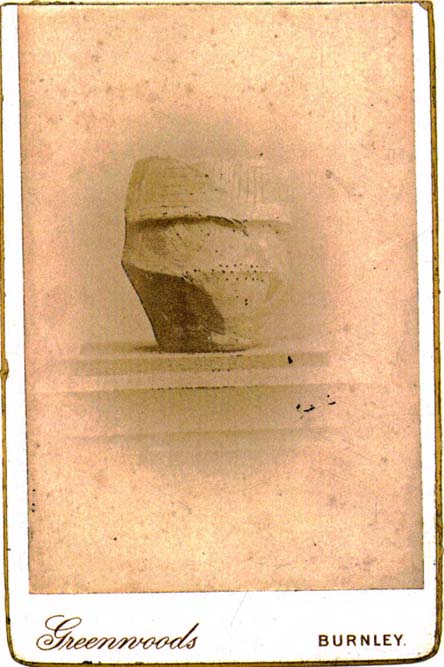Ring Cairn: OS Grid Reference – SD 9006 3373
Also Known as:
- Delph Hill Pasture
Archaeology & History

Described in Walter Bennett’s (1946) magnum opus as a “stone circle” and repeated in Aubrey Burl’s (2000) magnum opus under the same category, the site here seems more likely to have been an old cairn circle, or perhaps even a simple tumulus — and a small one at that! It was first noted in June of 1842 when the antiquarian, Mr F.C. Spencer of Halifax, “had his attention called to a circle of stones in a field called Delph Hill Pasture by Jonas Lee, a Thursden farmer, and a somewhat noted character in his day” who knew the location very well. It didn’t take long for Mr Spencer to realise that this was “an ancient British barrow,” as he called it, and made plans to excavate the site soon after seeing it.
Following Spencer’s dig, a short account of the finds was made in the Gentleman’s Magazine, telling of the remains of this “small circle of stones” and the burials therein. The account said:
“The circle originally consisted of rock pillars (five of which remain) , standing about 18 inches above the surface, and being about 2 feet square. The diameter of the circle is about 5 yards. Mr Spencer directed an excavation to be made without delay, the result of which was the discovery of two very antique earthen urns, curiously marked, containing fragments of human bones, of small dimensions, mixed with charcoal and black mould. The tops of the vessels were covered with small flat slate-stones, but little larger than the urns, over which larger heavy stones were placed for their protection. The urns were found about 2 feet beneath the surface of the field, in the centre of the circle, embedded in soft clay, with many pieces of charcoal interspersed. About 300 yards from the barrow are the bold remains of a British circular camp…”
A few years later, Tattersall Wilkinson (1893) told that “three unglazed urns, with human remains and flint arrowheads” (my italics) were found at the locale. Curiously there has been some confusion as to the number of urns that were actually found at Delf Hill by different authors over the last 175 years (numbering between 1 and 3, depending on whose account you read!), but it would seem this has occurred due to the proximity of other tombs close by.
An excursion to Delf Hill a few years after Spencer’s first dig is described in an article by L. Clement (1874), where several members of a local history society reported that the mound here consisted of a “small circle of stones, seven in number, fourteen feet in diameter”, that probably surrounded the hillock. One of the stones had been knocked over and moved, so the group took it upon themselves to place the monolith back into what they thought was its original setting within the monument.
References:
- Abraham, John Harris, Hidden Prehistory around the North West, Kindle 2012.
- Barnes, Bernard, Man and the Changing Landscape, Merseyside County Council 1982.
- Bennett, Walter, History of Burnley – volume 1, Burnley Corporation 1946.
- Booth, Thomas, Ancient Grave Mounds on the Slopes of the Pennine Range, R. Chambers: Todmorden 1899.
- Burl, Aubrey, The Stone Circles of Britain, Ireland and Britanny, Yale University Press 2000.
- Clement, L., “Roman Remains in Marsden, Briercliffe and Extwistle,” in Transactions of the Burnley Literary & Scientific Club, volume 1, 1874.
- Gomme, George Laurence, The Gentleman’s Magazine Library: Archaeology – Part 1, Houghton, Mifflin & Co.: Boston 1886.
- Watson, Geoffrey G., Early Man in the Halifax District, HSS: Halifax 1952.
- Wilkinson, Tattersall, “Extwistle Moor, Burnley,” in Transactions of the Lancashire & Cheshire Antiquarian Society, volume 11, 1893.
© Paul Bennett, The Northern Antiquarian
The map could not be loaded. Please contact the site owner.